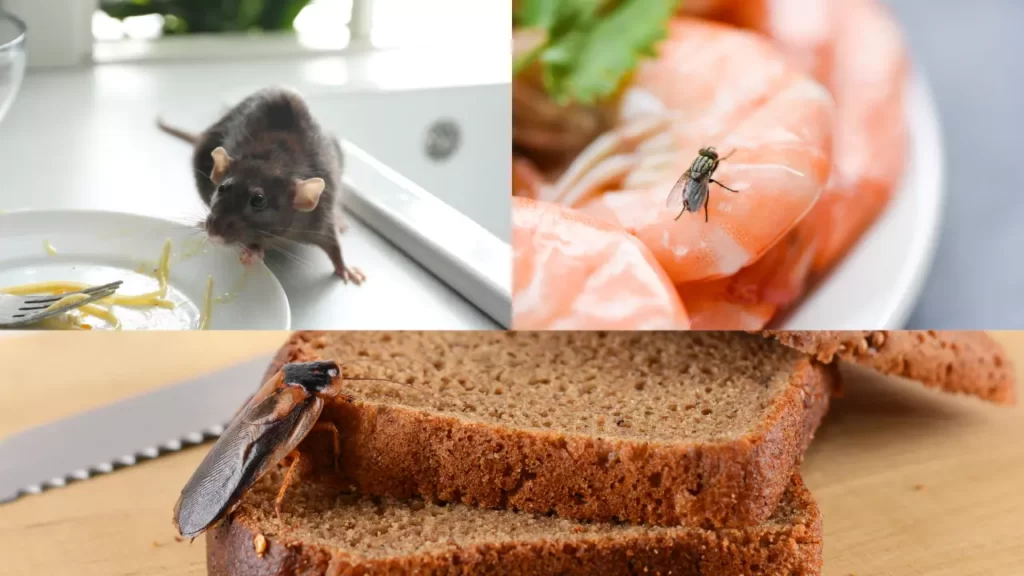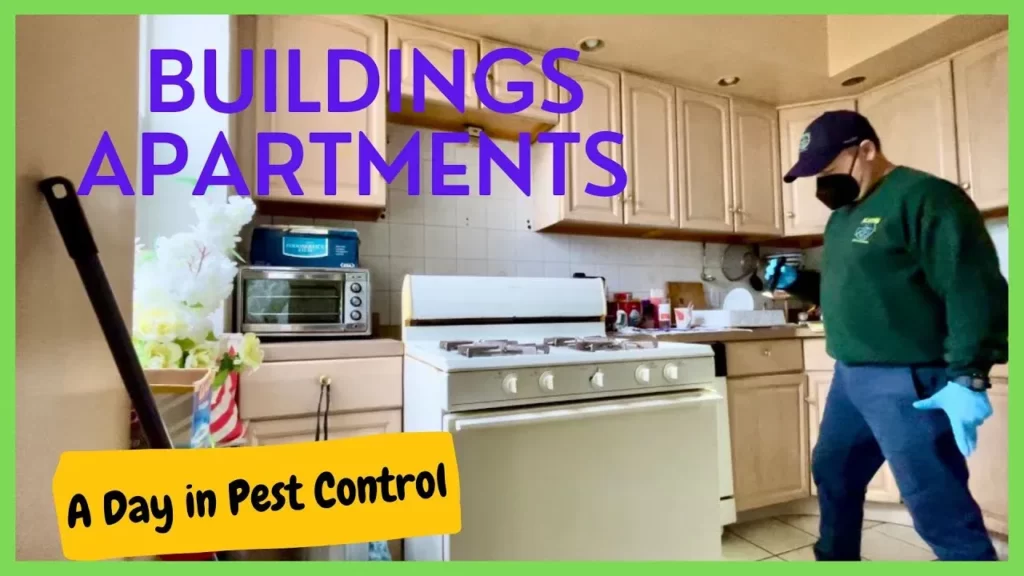In the bustling urban landscape of New York City, the presence of pests in residential properties has become a persistent and multifaceted issue. From rodents scurrying through apartments to bedbugs invading homes, these infestations pose significant challenges to residents and property owners alike. The diverse environmental factors, architectural designs, and human behaviors in this densely populated area contribute to the proliferation of pests. The article provided by Completed Bed Bug Exterminating delves into the detrimental effects of these infestations, spanning from health risks and structural damage to the psychological toll on inhabitants. It also examines existing pest control methods, their limitations, and advocates for enhanced strategies to mitigate this pervasive problem in NYC residences.
New York City, with its bustling streets and densely packed urban dwellings, faces a myriad of pest-related challenges within residential spaces. Among the most prevalent nuisances are rodents, including rats and mice, known for their ability to infiltrate buildings through small openings and thrive in various environments. Cockroaches, resilient and adaptable, infest kitchens, bathrooms, and hidden corners, posing health risks due to their potential to spread diseases. Bedbugs, notorious for their nocturnal feeding habits, cause discomfort and psychological distress among residents, leading to sleepless nights and itchy bites. Additionally, ants, attracted by food residues, invade homes in search of sustenance, especially during warmer months.
The occurrences of these pests in NYC residential areas exhibit seasonal variations. For instance, during the summer, a surge in cockroach and ant activity is observed, as the warmer weather and increased humidity create optimal conditions for their reproduction. In contrast, bedbug infestations might intensify during colder months when these pests seek warmth indoors. Rodents, however, tend to persist year-round, adapting to the changing seasons by seeking shelter and food within buildings regardless of weather conditions.
Understanding the behaviors and seasonal patterns of these pest species is crucial in detecting early signs of infestation within NYC residential properties. Residents should remain vigilant for indicators such as unexplained bites or rashes, droppings, unusual odors, or visible pests, particularly around food storage areas or bedding. Recognizing these early signs empowers individuals to take prompt action, notifying landlords or seeking professional pest control services to address the issue swiftly before it escalates into a more significant problem. Such proactive measures aid in early intervention and effective management of pest infestations, safeguarding the well-being of residents and the integrity of their homes.

Pest infestations in NYC residential properties stem from a complex interplay of environmental factors, building infrastructure challenges, and human behaviors, intensifying the prevalence and persistence of these nuisances.
Environmental factors wield a significant influence on pest proliferation. The climate in NYC, characterized by varying temperatures and humidity levels throughout the year, provides an ideal habitat for pests to thrive. Moreover, inadequate sanitation practices, especially in densely populated urban areas, contribute to the availability of food sources, encouraging pests to infiltrate and breed in residential spaces. Urbanization, while offering convenience and connectivity, inadvertently creates habitats that facilitate pest infestations due to the close proximity of buildings and limited green spaces.
Building infrastructure and design issues play a pivotal role in pest ingress. Poorly maintained structures, cracks in walls, gaps around doors and windows, and improper waste disposal systems serve as entry points for pests. Inadequate ventilation and lighting in certain areas of buildings create favorable conditions for pests to establish colonies, exacerbating the infestation problem.
Human behavior and habits significantly impact pest proliferation. Improper storage of food, neglecting timely repairs, and overlooking basic sanitation practices inadvertently attract pests. Additionally, clutter and hoarding tendencies provide hiding spots and nesting areas for pests, facilitating their persistence within residential spaces.
Addressing these multifaceted factors requires a comprehensive approach that integrates environmental management, building maintenance, and community education to effectively combat pest infestations in NYC residential areas.
Pests infesting residential properties in NYC not only pose immediate nuisances but also precipitate significant and diverse impacts on both the physical and mental well-being of inhabitants.
Pests such as cockroaches, rodents, and bedbugs are notorious carriers of allergens, pathogens, and disease-causing microorganisms. Their presence elevates the risk of allergies, asthma, and respiratory problems among residents. Cockroach allergens, for instance, trigger allergic reactions and exacerbate asthma symptoms, particularly in children. Rodents can spread diseases like leptospirosis and hantavirus through their urine and droppings, posing serious health threats. Bedbug bites can cause allergic reactions and, in some cases, psychological distress.
Pests can wreak havoc on residential structures. Rodents gnaw on wiring, insulation, and wooden structures, potentially leading to electrical issues and structural damage. Termites pose a significant threat by feeding on wood, compromising the integrity of buildings and requiring costly repairs. Additionally, the presence of moisture-loving pests like cockroaches and ants can contribute to mold growth, further deteriorating building materials.
Beyond physical implications, the persistent presence of pests can take a toll on the mental health of residents. Sleep disturbances caused by bedbugs or the constant fear of encountering pests in one’s home can lead to heightened stress, anxiety, and a diminished sense of well-being. The stigma associated with pest infestations might also lead to social isolation and a sense of embarrassment among affected individuals.
Understanding and mitigating these multifaceted impacts of pests on residential properties in NYC is crucial not only for preserving physical structures but also for safeguarding the health and mental well-being of its inhabitants.
Existing pest control methods encompass a spectrum of approaches, including both chemical and non-chemical strategies. Chemical methods involve the use of pesticides, insecticides, and rodenticides to exterminate pests. Non-chemical methods include integrated pest management (IPM) techniques, which emphasize preventive measures, habitat modification, biological controls, and employing physical barriers to reduce pest populations.
However, these methods are not without limitations. Chemical treatments may pose health risks to humans and pets if not applied correctly or excessively. Moreover, pests can develop resistance to certain chemicals, rendering them less effective over time. Non-chemical methods like IPM require significant effort, time, and expertise, making them challenging to implement consistently.
The economic implications of pest control for residents and property owners are substantial. DIY pest control measures often entail recurring expenses on over-the-counter remedies, while professional services may demand higher upfront costs. Structural repairs resulting from pest damage and potential loss of property value further escalate financial burdens.
Professional pest control services offer relief by providing specialized expertise and comprehensive solutions. Professionals assess the infestation, tailor treatment plans, and employ effective strategies to eradicate pests while minimizing risks to residents and the environment. Their knowledge helps in implementing long-term preventive measures, alleviating the stress and burden on residents and property owners.
Balancing the efficacy, safety, and cost-effectiveness of pest control measures remains a continual challenge, necessitating innovative and sustainable approaches to curb infestations in NYC residential properties.

Pest infestations in NYC residences present a significant and persistent challenge. According to the NYC Department of Health and Mental Hygiene, reports of rodent complaints in residential areas have surged, with an average of over 100,000 complaints annually over the past few years. Additionally, bedbug infestations have shown an alarming increase, with a 27% rise in reported cases in the last five years, impacting households across boroughs.
The economic burden on households and property owners due to pest infestations is substantial. A study conducted by a local housing authority revealed that residents spent an average of $600 to $1,200 on DIY pest control measures annually, including purchasing pesticides and hiring exterminators. Moreover, the costs associated with repairing structural damages caused by pests, such as termite or rodent damage, have been estimated to range from several hundred to thousands of dollars, significantly impacting the financial stability of affected households and property values.
These statistics underscore the pressing need for robust pest management strategies to alleviate the burden on NYC residents and property owners.
Integrated Pest Management (IPM) strategies stand as a cornerstone for effective pest control in NYC residences. IPM focuses on proactive and sustainable approaches, emphasizing prevention, monitoring, and employing a combination of methods to manage pests with minimal impact on health and the environment. This method includes identifying pest vulnerabilities, implementing sanitation practices, sealing entry points, and using targeted treatments only when necessary.
Community involvement and education play a pivotal role in successful pest management. Collaborative efforts among residents, landlords, local authorities, and community organizations are essential in raising awareness about pest prevention and fostering a collective responsibility toward maintaining clean and pest-free environments. Educating residents about proper waste disposal, sanitation practices, and early detection of pest signs empowers individuals to take proactive measures in controlling infestations.
City regulations and policies hold significant influence in pest control efforts. NYC’s health and housing departments enforce regulations pertaining to pest management in residential properties. Stringent guidelines ensure landlords maintain a pest-free environment, undertake necessary repairs, and respond promptly to complaints. The city’s involvement extends to monitoring and enforcing compliance with pest control measures, ensuring accountability among property owners to maintain habitable and pest-free living spaces for residents.
Implementing these best practices in a concerted effort ensures a holistic approach to pest management in NYC residences, mitigating infestations and fostering healthier living conditions for inhabitants.
In conclusion, the prevalence of pests in NYC residential properties poses multifaceted challenges affecting health, infrastructure, and the well-being of inhabitants. Addressing these issues demands a comprehensive approach integrating effective pest control methods, community engagement, and robust regulatory measures. By prioritizing integrated pest management strategies, fostering community awareness, and enforcing stringent regulations, NYC can alleviate the economic burden and health risks while cultivating cleaner, safer, and more habitable environments for its residents. It is imperative to commit to sustainable and proactive measures to combat pest infestations and ensure healthier living conditions across the city.
How common are pests in NYC?
Pests are prevalent in NYC, with reports indicating a high frequency of infestations, particularly rodents, cockroaches, bedbugs, and ants, across residential properties in the city.
What is the pest law in New York City?
In New York City, the Housing Maintenance Code mandates landlords to maintain habitable, pest-free living conditions. Landlords are responsible for addressing and eradicating pest infestations promptly upon notification by tenants. The code requires landlords to maintain cleanliness, undertake necessary repairs, and implement pest control measures to ensure habitable and pest-free residential properties for tenants.
How can we prevent pests in NYC?
Prevent pests in NYC by sealing entry points, maintaining cleanliness, decluttering, proper garbage disposal, regular inspections, using integrated pest management, educating residents, and seeking professional pest control services.
What is the local law 55 in NYC?
Local Law 55, also known as the Asthma Free Housing Act, mandates landlords of buildings with three or more apartments (or any size where a tenant has asthma) to ensure pest and mold-free living conditions. Landlords are required to address and rectify conditions that lead to these issues, providing a healthier environment for tenants, especially those with asthma.
Is pest control taxable in NY?
In New York, pest control services are generally taxable. However, there are exceptions for certain pest control services when they are considered part of a maintenance contract for real property, which might be exempt from sales tax. It’s advisable to consult with a tax professional or the New York State Department of Taxation and Finance for specific and up-to-date information regarding the taxability of pest control services in the state.